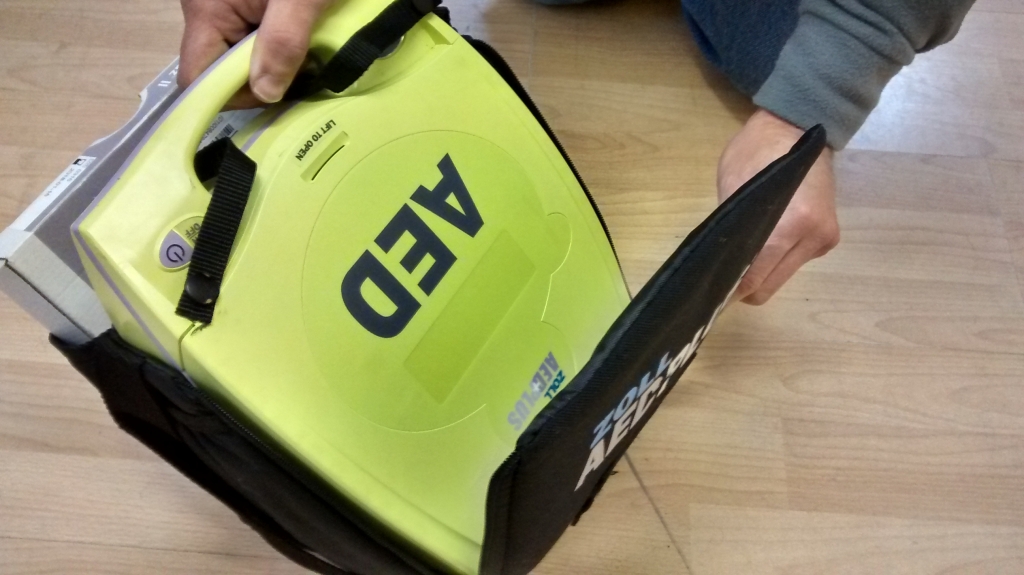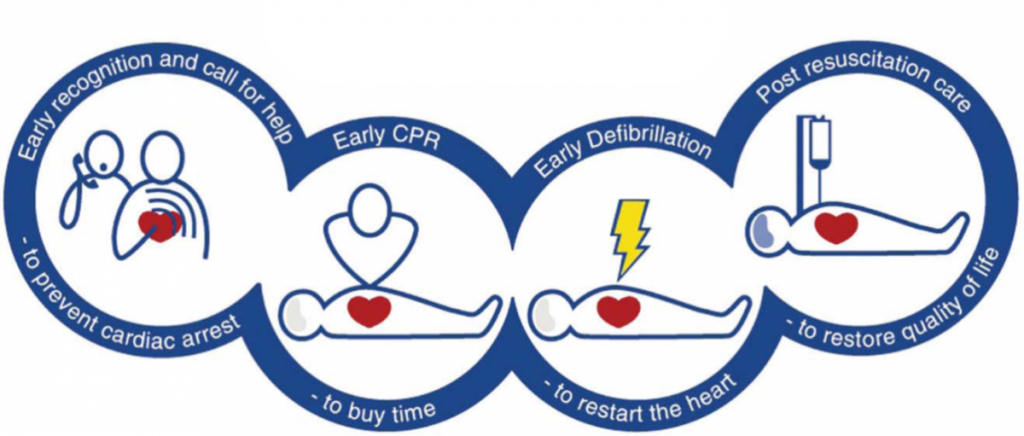An AED (or Automated External Defibrillator) is a portable self powered device that delivers a controlled electrical shock to the heart after diagnosing a problem with a casualty’s heart.
AEDs) are only used in conjunction with performing CPR (Cardiopulmary resuscitation) as this keeps the body oxygenated and blood is supplied to the body’s organs and tissues, until an AED is used. (Portable or with the Ambulance service)
A common myth is that the defibrillator shocks the heart back into a normal rhythm. It doesn’t; It actually stops the heart and gives time for the casualty’s own pacemakers to carry on working.
The AED shock stops the heart and lets the hearts natural Pacemakers (X2) to restart the electrical rhythm of the heart.
As you can see from this diagram, the earlier the AED is used after recognition of a cardiac arrest, the better the chance of survival. After 10 minutes there is zero chance of recovery from a cardiac arrest
The number of community-based defibrillators are on the increase, especially around Bournemouth, Poole and Dorset locations such as public spaces and buildings. We are supporting this as it will mean more chances to save lives across the area.
Awareness and practical knowledge of using AEDs are taught with all of our first aid courses with First Aid Training That Cares. For more information on how to register for a first aid training course with us please contact us or browse through the courses.






Leave A Comment